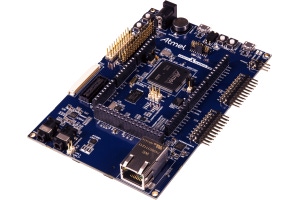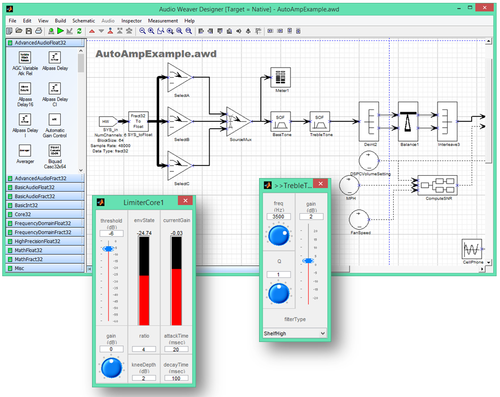July 23, 2015

Reflect a little on the number of hours and days you have spent in your car listening to the radio, music, satellite radio, and struggling with mobile calls. Unless you own a very high-end vehicle with sublimely tuned sound (Burmester, anyone?), then you have like me been suffering for years and want something a lot better.
The good news is that the never-ending march of Moore’s law may bring us better car audio in the not-too-distant future, but first we need to look at why current mass-market car audio systems are so unsatisfying. First and foremost is the fact that we aren’t sitting in the center of the car like you can in your living room, so the audio has to be balanced to your seating position. Sweet spots have to be created in the driver and passenger seats.
Next is road and engine noise, which are constantly changing as you speed up and slow down. Also, the speakers are in less-than-ideal locations -- on doors, under the dash, and even in the roof pillars -- and our ears in very close proximity to the speakers. The window glass reflects sound, the seats absorb it, and now we have microphones ready to pick up all that extraneous noise as we jump on hands-free phone calls.
Simple audio systems in mass-market cars can also distort if you turn the volume way up. Too much and you overload and break the speakers (think teenagers).
As an engineer, this is quite a design engineering challenge no matter what kind of car you’re tasked with designing.

So looking at this as an engineering problem, we can leap into the wonderful world of digital signal processing (DSP) and try to overcome the constraints of the analog car interior world. With DSP we can apply dynamic range expansion and push the audio signal above the noise floor, normalize signals from the various sources so the volume levels don’t jump around as we change sources, change the equalization based on speed-dependent road and engine noise, and clean up voice calls from mobile phones. It’s a wonderland of digital sleight of hand!
MORE FROM DESIGN NEWS: ARM Processors for Microcontroller Applications: Architecture for the Internet of Things
So it’s possible to use a DSP (along with an MCU and some flash memory) to “fix” some of the in-car audio problems. But here’s the issue: DSPs are expensive and hard to design with, so they are too expensive for other than luxury cars.
Car manufacturers are very cost-sensitive because the low- to midrange vehicle market is extremely competitive and margins can be thin. So we have suffered with suboptimal audio for quite a while. But there is change afoot, and it comes from the very world that is changing in-car audio in a profound way: the mobile market.
ARM cores are widely used in mobile devices, and as they become available in other microcontrollers, they are going to change the cost-benefit equation of many industries and especially the Internet of things (IoT). Case in point is the Atmel SMART SAMV7 automotive-grade MCU, which utilizes the ARM Cortex-M7 core. The ARM Cortex-M7 is not only a powerful (but low-power) microcontroller, it’s a very capable DSP. Combined with DSP design software like Audio Weaver, it can solve the automotive audio challenges detailed above.
The Cortex-M7 is 50% faster than the Cortex-M4 and has twice its DSP processing capabilities, so it’s approaching the realm of dedicated DSPs but at a fraction of the cost and complexity of multichip designs.
Audio Weaver is a proven design platform for automotive audio systems, and DSP Concepts recently added support for the ARM Cortex-M7. The drag-and-drop functionality allows designers to create complex audio systems without the need for dedicated DSP engineers, saving time and cost. Here is a screenshot of how designers can drag and drop the audio processing they need into their designs:

Audio Weaver can be used throughout the design process for evaluating third-party algorithms, designing the signal flow, optimizing the sound quality through tuning, and, finally, testing to ensure that the product meets the stated design requirements. It’s the only cross-platform design environment available and the only audio design platform that supports ARM processors.
MORE FROM DESIGN NEWS: Freescale's New Automotive MCU Is Designed for Software Engineers
A designer can solve the audio challenges like speed-dependent equalization and dynamic range compression that automotive audio systems need in a few simple steps. So that 3-chip solution can be replaced with a single Cortex-M7-based chip and still deliver a premium automotive audio experience at an affordable price.
The Atmel SMART MCU has an impressive list of capabilities for a very inexpensive part, for example:
•ARM Cortex-M7 based MCU running up to 300 MHz with 16 kB instruction and 16 kB data cache
•Up to 2 MB embedded Flash and 384 kB multiport SRAM
•Up to 128 kB instruction tightly coupled memory (TCM) and 128 kB data TCM
•Quad SPI with execute-in-place
•USB high-speed controller with integrated PHY
•Ethernet-AVB with hardware traffic shaping
•MediaLB 3-wire interface
•CAN-FD controllers
•SSC module for TDM / I2S connectivity
•High-speed multimedia card interface
•CMOS camera interface
•True random number generator, SHA-256 and AES-256 cryptographic engines
•12-bit ADC and DAC
•Low-power backup with 1 kB SRAM with wake-up on CAN < 85uA @ 85C
This is all available in automotive-grade specifications and can control up to 8 channels.
If you think this hardware and software combination might solve some of your audio processing challenges, then Atmel offers a SAMV7 evaluation board for $136 (below) and in conjunction with a free download of Audio Weaver software, you can prototype an audio system quickly.

David Blaza is a tech and semiconductor marketing insider.
About the Author(s)
You May Also Like



